Eastern cottonwood, Populus deltoides, is one of the most common trees in the central United States, particularly in moister parts of the Midwest. Henry David Thoreau, who near the end of his life once traveled by train to Minnesota, had probably not encountered this tree in his native Concord, but on this trip he took some note of it and thought enough of its new prevalence in his surroundings that he commented in his journal, “The prevailing shade-tree in Chicago [is] the cottonwood.” Not a ringing extolment, but after all, he was speeding by on a train. As trains turned to boats, and then to ox-carts, on the way up the river into the heart of the darkness of Minnesota’s frontier plains, he commented twice more, once observing that “The cottonwood is shaped somewhat like an ash,” and later, noted the sight of “grapevines in blossom climbing on a cottonwood.”
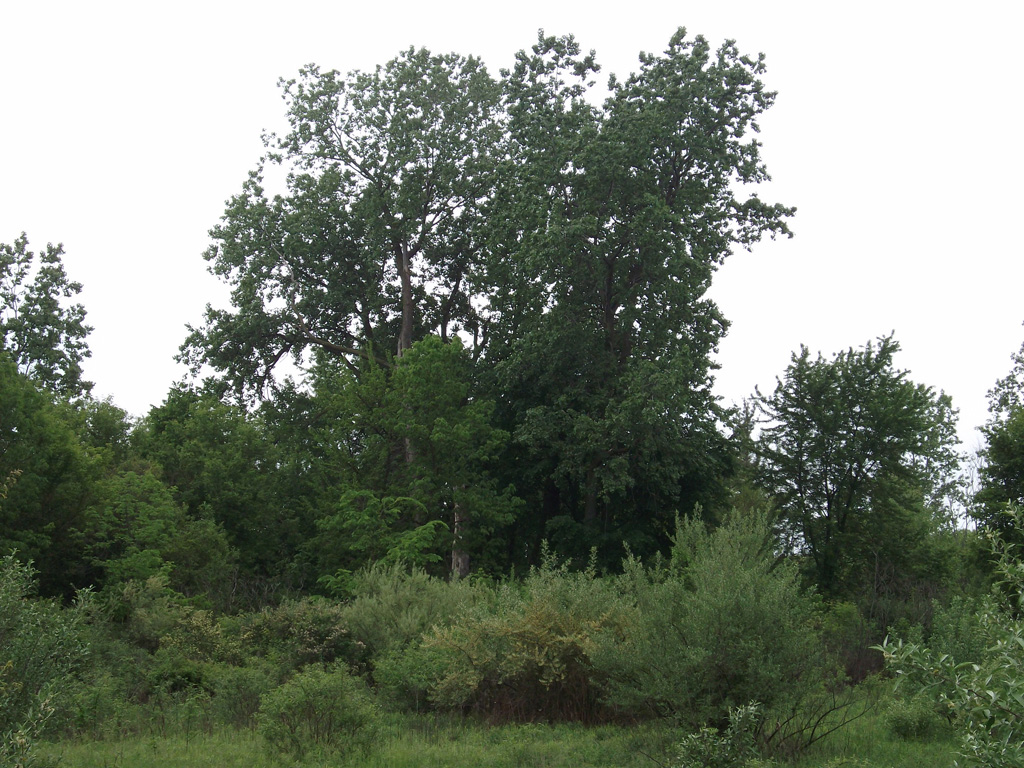
Had Thoreau been born in the Midwest instead of New England, we might have heard more about the magnificence of this tree, and its unsung virtues. Today, most who live in its midst are at best ignorant and at worst dismissive of its qualities. The wood of the cottonwood is derided as “worthless for lumber” and “poor firewood,” as it shrinks and cracks when sawn into boards, and has a great capacity to retain water even when other woods have dried quite thoroughly. These things are generally true. I have tried to split large sections of green cottonwood using a maul and a wedge, only to see water squeeze out as the wedge sank into the spongy wood. I have also shivered near a fire of cottonwood logs, which do not seem to emanate as much heat as other woods, even when dry. As if to complete the picture, as I shivered, I was sitting on a bench I had carved out of a fallen cottonwood log not many weeks before, and it had already formed a large crack at one end, and was growing a large mushroom out of the other.
Some suburban areas have even outlawed the planting of cottonwoods, possibly because of a perception that they are dangerous and likely to fall (this is highly debatable), but more likely, because the namesake cottony fuzz they emit every spring and summer can be an annoyance to fussy suburbanites when it collects in their swimming pools.

The magnificent seven
However, my favorite grove of trees on this property is an ancient grove of cottonwoods. Pictured above and below, these seven sisters have occupied a low spot in the topography for untold years. I grew up nearby as well, and I’ve seen it in pictures of myself as an infant, looming in the distance across fields that are now young forests, looking even from afar just as tall as it is today. If cottonwoods fall easily, these would dispute that notion.
Their springtime fuzz, and that of their descendants nearby, drifts down lazily across the clearing near my house, lending a certain mythical quality to the canyon formed by the canopies of two neighboring woods, and recalling a memorable scene from the 1985 Ridley Scott film, Legend, where cottonwood fuzz was featured on an equal footing with rose petals, unicorns, and a princess courted by a young Tom Cruise.
In winter, this grove still towers over the flat terrain. With the leaves now down, it again becomes possible to penetrate the undergrowth to the base of their trunks, revealing the shallow depression from which they drink in the spring and shed their leaves in the fall, completing a cycle of perpetual, exuberant life.
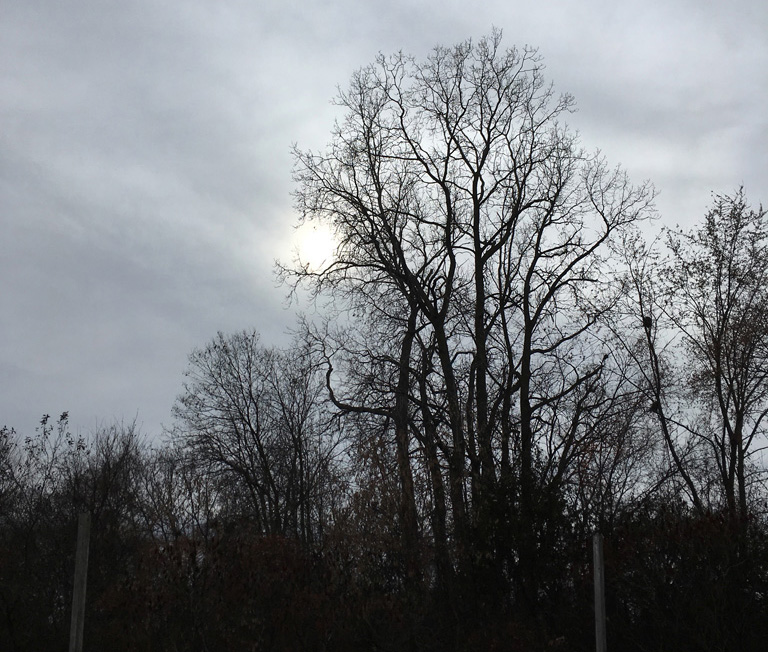
These are not the oldest trees in the vicinity, but certainly some of the tallest. Their location in a shallow, marshy depression near the border between two farms has saved them from disturbance by several generations of industrious farmers. A bleached snag in their midst, either older or unluckier than the rest, now provides habitat for red-tailed hawks, screech owls, and other species who choose the altar of this arboreal temple as a likely place to overwinter.
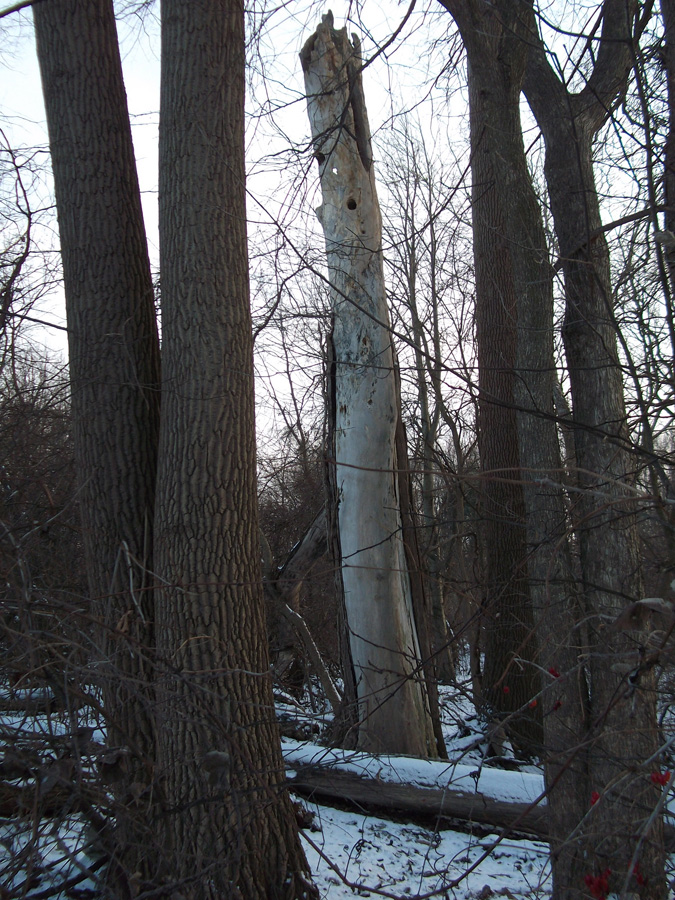
Fallen icons
Of course, like all trees, cottonwoods sometimes do fall. To the west of this grove, I had long admired a massive, freestanding specimen, whose imposing, perfectly cylindrical trunk was visible from the house, standing like a Corinthian column at the edge of a small wood. With a similar companion nearby, and with the right kind of light, they anchored a scene that Maxfield Parrish might have chosen to paint, perhaps between Daybreak and Hilltop.
But in the summer of 2018, while I was gone on a trip, what must have been an unusually vicious storm pulled it down, along with its younger companion. This storm also damaged the house and the utility lines in rather puzzling ways, suggestive of a microburst or small tornado. So I still think it takes a lot to bring down one of these trees.
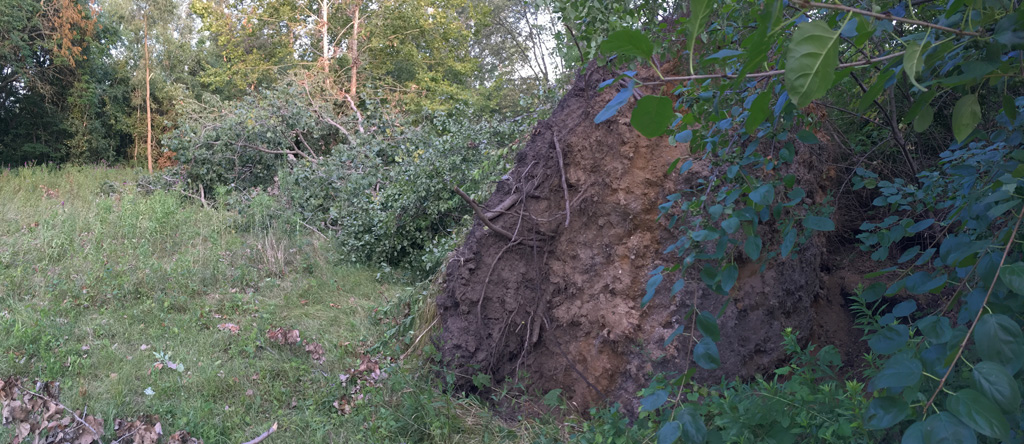
This must not have been the first time. When I first purchased this property, it was littered with large piles of very old brush, which seemed to have been piled up either from a land clearing event or the cleanup from a similar storm. I spent at least two years gradually cleaning up these piles by judicious application of chainsaw, wood-stacking, and bonfire.

On the scent
But as if arranging assignations between the growing wood pile and the fire pit each evening was not already pleasant enough, occasionally I would get a whiff of a very nice and completely unexpected fragrance emanating from the flames. It was fleeting and rare enough that I just couldn’t manage to identify the type of wood that was generating it. In fact, most of the wood in those piles was so old that it was hard to identify the species, even if I could have told which piece it was coming from. I sniffed many a smoky stick, to no avail. When the brush piles were finally gone, I shrugged my shoulders and assumed it must have been a few branches of some invasive shrub, of which I was hopefully burning the last trace. But oh, I would miss that scent!
It was not until the Corinthian columns came down that I discovered the source — it was cottonwood. More specifically, it was the bark. By the time I got around to removing the smaller of the fallen cottonwoods, much of its bark had already fallen off the trunk. As part of the cleanup, I gathered it and added it to the bonfire. And there was that unmistakable scent again, stronger than ever before — still subtle, but definitely worth appreciating.

A woodsy essence
The fragrance of burning cottonwood bark is hard to describe, as it’s tied up with the natural smokiness of the burning wood. It has a woodsy character accented with a distinct, sweet essence — a sophisticated presence one might expect of a tropical wood, not of a lowly midwest native. While the wood itself is not fragrant, the bark seems to contain an essential oil that is also without scent until it is freed by the heat of the fire. I have not yet identified exactly where within the many shaggy layers of dried bark the oils may be concentrated, but I do know that if I were to place either of the pictured piles of bark onto a fire, I would get the scent.
It might even be possible to create a sort of incense stick by rolling up the bark layers — although I have no idea whether it would gently smolder like an incense stick, or flare up and burn the house down. Cottonwood just does not seem inclined to cooperate with many of mankind’s purposes or impulses.
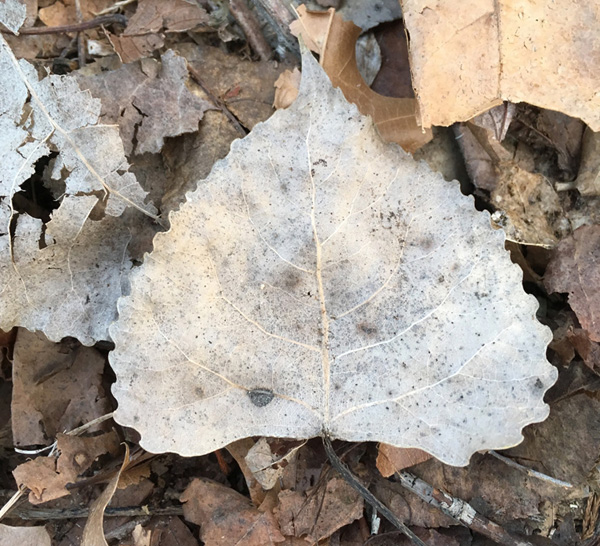
Summary execution
Unfortunately, the felling of cottonwood logs has become something of a fashion in my vicinity. Since cottonwoods are so common and fast-growing, they have often grown to very large sizes in the fallowed fields and healthy forests that have been encroaching on our commercially-zoned suburbs.
As one of many examples, below we see the result of bringing a Menard’s home improvement store to a large undeveloped tract near Belleville, Michigan, in 2017. This is a woodpile of a different sort. These massive logs, piled as tall as me and almost entirely cottonwood, were so neatly stacked that I initially drove up to take the picture as evidence that for once, someone might be planning to at least repurpose the logs for something useful.
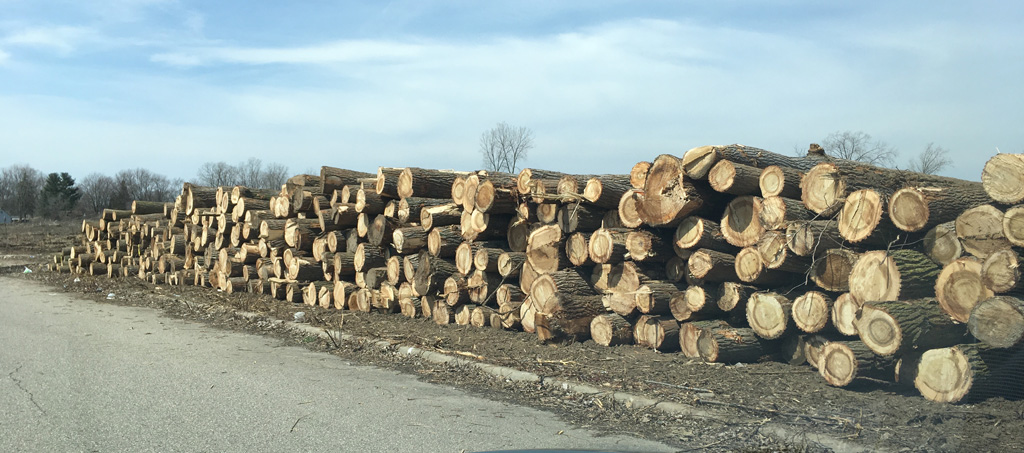
But that was not the case. Stepping back, we can see that they are merely lined up to make it more efficient to grind them into mountains of wood chips — which is now considered the most efficient way to remove an unwanted forest from a construction site. Now exposed to weather and rot, the remains would be unsuitable for even a low purpose like fiber production or pulp; often, these moist piles of green wood start generating visible smoke and steam well before they are hauled away. Most likely, they were sold to a mulching operation, where they would eventually turn into methane and carbon dioxide, out of sight and out of mind.

Nothing to see here, folks
Even during a climate crisis, there was nothing to stop hundreds of mature, healthy trees from going from carbon sink to carbon source in a few contractor-hours, simply because we needed another home improvement store, in a county that already has dozens of them. Or more accurately, a corporate retail chain needed to grow, to compete with its competitors; and a township council needed to strike a deal for a new amenity in their constituents’ district, to compete in the next election. Human activity, that is — when they say it’s the cause of climate change, this is what they they’re talking about.
When we seek to find pleasure by recognizing beauty in the things around us, often it pays to stop when we are ahead.
Yes, I do burn the logs in my woodpile, but only gradually and on a very small scale, from trees that have already fallen, after they have given their all to support the ecosystem for the period of time that their life span permitted. In the meantime, the stacked wood pile creates a log pile habitat for all sorts of critical insects and invertebrates, such as mason bees, crickets, and the grass-carrying wasp.
Soon, I will build a simple charcoal retort, and begin transforming my fallen trees into high-quality lump charcoal, which I will then pulverize and bury in the garden as a soil amendment. At that point, I can burn my logs and sequester them, too.
But there will always be room for a small, warm fire, of fallen detritus and a bit of cottonwood bark.
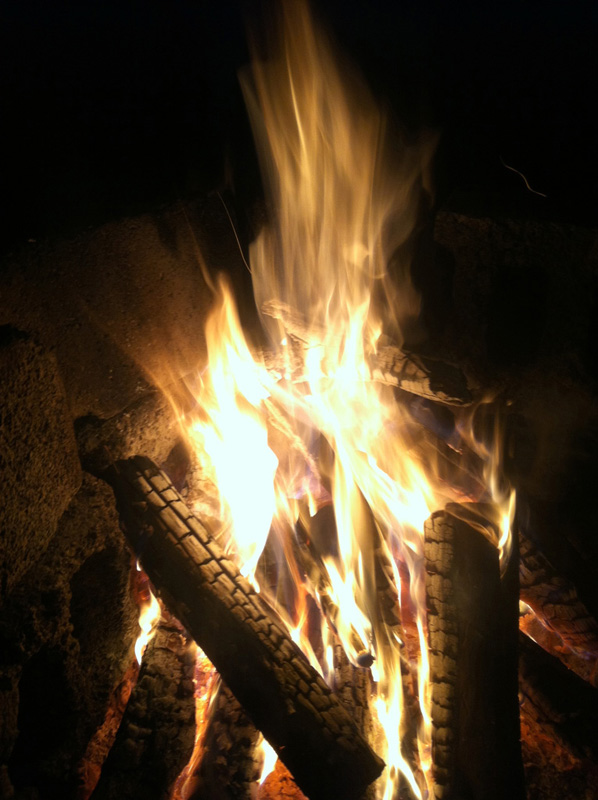
Article and photos Copyright 2021.
To be notified of new articles, visit https://whatshallweweird.com/subscribe/



One Comment
Pingback: